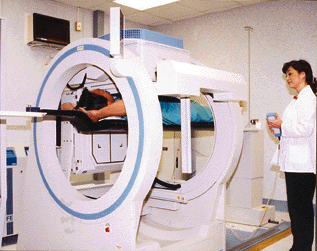Various Tests for Cancer Detection and Prevention
Cancer prevention goes a long way from simply taking measures to avoid getting cancer. Getting tested for cancer is also an important factor in cancer prevention. It is an early cancer diagnosis that treatment of cancer can become successful. There are numerous cancer prevention tests that can be used to detect cancer. West.net gives us a low down of some of these cancer tests:
Tests for Bladder Cancer
Over the past few years, cancer news has revealed a number of new tests, which can be performed on urine samples, to aid bladder cancer diagnosis.
• BTA® test – designed to detect proteins that are released by reproduction of bladder cancer tumor cells and its interpretation does not require a technician or specialist. The BTA® test significantly identifies superficial (surface) bladder cancer tumors by changing color. The top of the BTA® test strip turns yellow when positive for bladder cancer and it turns green when negative. The BTA stat test is an immunologic assay that can be used to identify recurrent bladder cancer.
• The FDP® test detects the breakdown products of blood-clotting proteins (fibrin, fibrinogen), which are increased in the urine in the presence of bladder cancer.
• The NMP22™ assay measures specific proteins from the cell center. It can detect transitional cell carcinoma (TCC) with a sensitivity of roughly 67%, meaning that 67% of existing TCCs are detected. The NMP22™ assay is also more importantly able to predict the recurrence of bladder cancer.
Tests for Breast Cancer
• Acueity ductoscopy is a patented optical system and ductoscope, about the size of a pencil tip, which enables physicians to look through the nipple directly into the milk ducts where 85% of breast cancer develops. Their system of microendoscopes, coupled with patented OptiCue™ optical technology results in large, clear and sharp video images of the mammary duct system, with unprecedented depth of field perception and detects lesions as small as 0.2mm in diameter (50 times more sensitive than a standard mammogram.)
• Amas test – this can be the first test choice to check for breast cancer. The AMAS test detects the malignant growth only and is more sensitive than mammograms. Further tests are warranted however if the AMAS is positive for cancer as it does not indicate where the cancer is located, only that there is cancer within the body. AMAS test can also be used to follow breast cancer patients who are in remission, since the AMAS returns to normal within 3 months after breast cancer tumor (and metastases, if present) are removed or eradicated.
• Ductal lavage is a new test developed by Dr. Susan Love. It is a simple blood test and an infrared imaging system that samples the lining of ducts of the breast to see what the cells are doing and to detect precancerous abnormalities or cancer cells. It has been dubbed “pap smear for the breast” because, like the test for cervical cancer, it is a non-surgical approach to identifying abnormal cells, potentially making it possible to find them when they are just thinking about becoming cancer.
• Mammography/Thermography – the latest cancer information involves two new forms of mammography are making news on detecting breast cancers: Computed Tomography Laser Mammography (CTLM) and Full Field Digital Mammography.
The CTLM system uses state-of-the-art laser technology, a special array of detectors and proprietary computed algorithms. The CTLM® system does not expose the patient to ionizing radiation or require breast compression.
Digital mammography still uses low energy x-rays that pass through the breast exactly like conventional mammograms but are recorded by means of an electronic digital detector instead of the film. This electronic image can be displayed on a video monitor like a TV or printed onto film. The radiologist can manipulate the digital mammogram electronically to magnify an area, change contrast, or alter the brightness.
• Another test being developed is a blood test to detect a protein marker for breast cancer. The test apparently can pick up cancerous tumors and pre-cancerous conditions.
• Thermography can determine precancerous changes at an earlier, and theoretically more treatable, stage—months or even years before those changes would be felt as a lump or be visible on a mammogram, and all without radiation. Thermography uses thermal imaging which detects new blood vessels and chemical changes associated with a tumor’s genesis and growth.
• Other Imaging Methods for Breast Cancer Detection:
There also a number of other imaging methods available for detecting breast cancer. At present, they are used mainly in cancer research studies, and sometimes to get more information about a tumor found by another method. Each of these new methods generates a computerized image that the doctor can analyze for the presence of an abnormal breast lump. These include:
Scintigraphy [sin-TOG-ra-fee]
Also called scintimammography, this test uses a special camera to show where a tracer (a radioactive chemical) has adhered to a cancer tumor. A scanner is then used to see if the breast lump has picked up more of the radioactive material than the rest of the breast tissue.
• PET scan
 Cancer cells grow fast – especially breast cancer cells – faster than other cells, so they use up energy faster, too. To measure how fast glucose (the body’s fuel) is being used, a tracer (radioactive glucose) is injected into the body and scanned with a positron emission tomography (PET) machine. The PET machine detects how fast the glucose is being used. If it is being used up faster in certain places, it may indicate the presence of a cancerous tumor.
Cancer cells grow fast – especially breast cancer cells – faster than other cells, so they use up energy faster, too. To measure how fast glucose (the body’s fuel) is being used, a tracer (radioactive glucose) is injected into the body and scanned with a positron emission tomography (PET) machine. The PET machine detects how fast the glucose is being used. If it is being used up faster in certain places, it may indicate the presence of a cancerous tumor.
Tests for Colon/Colorectal Cancer
• Hemmoccult Test for colon/colorectal cancer tests for blood in the stool. A positive finding warrants having further tests, like a colonscopy or sigmoidoscopy to detect polyps and colon cancer tumors. This test can be performed by almost any doctor’s office.
• PreGen-26 – is a new DNA test for colon/colorectal cancer. It is a test to detect the presence of actual disease in people with hereditary non-polyposis colorectal cancer (HNPCC). In active colon/colorectal cancer, DNA from cancer tumors is shed into the colon and carried out of the body in stool.
• Carcinoembryonic Antigen (CEA) – is a cancer marker to screen for colon/colorectal cancer – it is associated with digestive tract cancers. It is recommended for those with frequent constipation, diarrhea or bleeding piles for an initial diagnostic tool.
Tests for Lung Cancer
• Sputum cytology – the microscopic examination of cells obtained from a deep-cough sample of mucus in the lungs can help determine if tests for lung cancer may be required. Ask your doctor about the Lung Cancer Alert test.
• PET Scans can also be done for detecting lung cancer. This test may be able to replace the need for a biopsy. PET scans appear to use less radiation than many CT scans and may provide a more complete cancer diagnosis.
Tests for Prostate Cancer
• Digital Rectal Exam (DRE) – the DRE checks the prostate gland for any bumps or abnormalities. Since this only checks the back of the prostate, it must be used with other tests for prostate cancer detection.
• Prostate Specific Antigen (PSA) – Prostate Specific Antigen may help detect prostate cancer early. PSA is a substance made only by the prostate. An elevated level may indicate cancer before the tumor is large enough to raise a bump that a doctor can feel during check up.
• Beckman Coulter’s Hybritech free PSA test – this test is able to more accurately distinguish prostate cancer from benign prostatic conditions. Free PSA can tell patients and physicians how aggressive the cancer is and advise the latter for the best treatment for cancer. This is measurable through a simple blood test.





